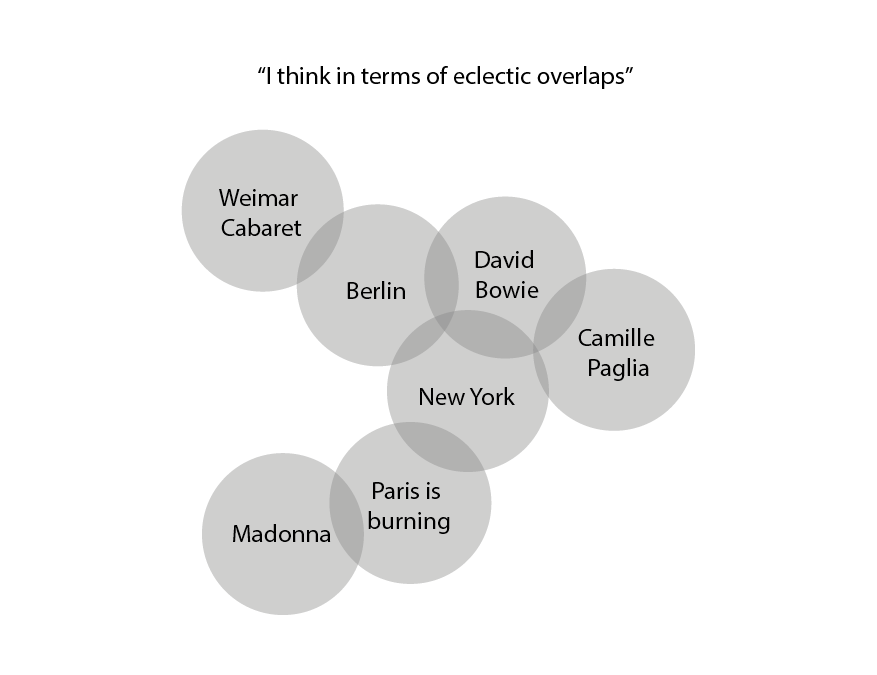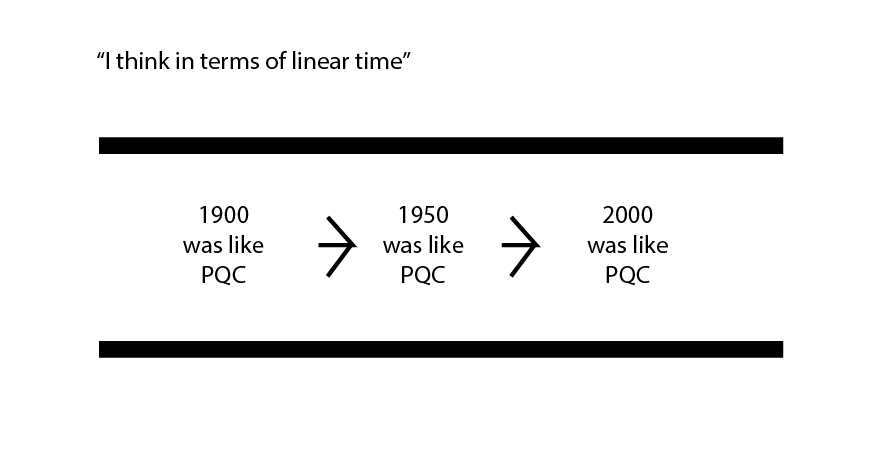Part one of Grounding your Research –
how is this more than just my opinion?
In 1995 in a speech at the UK Turner Prize ceremony, Brian Eno said that “The arts routinely produce some of the loosest thinking and worst writing known to history”
(Eno, 1996, p259)
When artists approach writing for research, there is often a hesitation towards the perceived straitjacket of academic writing.
But what are we imagining when we have this reaction? Is it a vague recollection of the type of essay we produced in school? For good reasons, we might have been focused on other skills since high school.
But now, as artistic researchers, in a position of writing again, it is necessary to revisit and discover the underlying notions we have about thesis writing which might be informed by these earlier experiences—so that we can discover new tools in the medium of words.
My memory of school essays is the following formula for writing paragraphs:
PQC
—point quotation comment.

This high school model got me through many exams. It was the “approved of” paragraph structure in grade school.
State your point of view, find some other (approved) person (or statistics) who agrees with you, quote them, and then expand/explain a little.
Marks were awarded according to the reputation/quality of the person, or institute/body (that conducted the statistical findings). You are judged on your synthesis of other people’s ideas and the quality of your judgement over what is a “good” source. Implicit here is that your high school teacher knows whether a quoted person or statistics are a good source and can arbitrate…
Perhaps I am making this sound too reductive. And certainly creativity is possible, even with this very simple pattern, because the tapestry of points and quotations will, over the course of many pages, start to make a map of your thinking. Done well, an assemblage is made that reveals your position by the sophisticated
つぎはぎ of other people’s arguments.

Or otherwise PQC could reveal your thinking through progression—e.g. from wide/general points to focused ones, or perhaps the inverse.

Other simple movements through a text could be imagined with PQC—a progression through time, a progression through space—linear, circular etc.

As a building block, we may still find use for what our high school teachers tried to tell us.
Though formulaic, this basic building block is accepted and straightforward. Straightforward may be boring, as an artist— we’re used to dealing with nuance and creative leaps, but it certainly relieves a lot of stress compared to more innovative and complex philosophic argumentation strategies. It can be properly sourced with bibliographies. It ticks the boxes and that may be more than sufficient for surviving your thesis.
Up next 2- Diverse methods that answer “How is this more than just my opinion”

Leave a comment